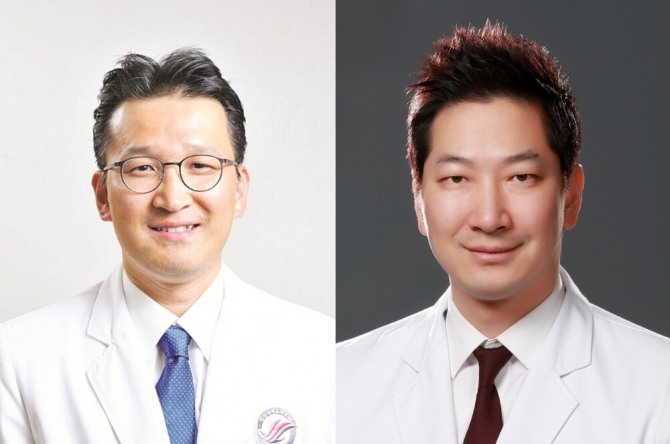
Hallym University Kangnam Sacred Heart Hospital is a researcher on pain control after rotator cuff tear repair by Prof. Gyu-cheol Roh’s team (corresponding author Prof. Gyu-cheol Noh, first author Prof. Jeong-Yeon Kim) of the Orthopedic Surgery Department.Orthopedic Journal of Sports Medicine 2021 It was announced on the 7th that it was published in the January issue.
The rotator cuff refers to the four muscles (tendons) used to move the arm. It is attached to the arm bone in a circle like a steering wheel, and it becomes inflamed and causes pain when you age or use a lot of strength.
If the pain persists, the rotator muscles weaken and rupture as if the seams loosen without any impact or force. It can rupture when repeatedly colliding with surrounding bones or injured by excessive force.
Recently, as the elderly population increases and the use of computers and smartphones increases, the number of patients with rotator cuff tear is increasing significantly. According to statistics from the Health Insurance Review and Assessment Service, the number of patients who visited the hospital due to rotator cuff rupture increased 39.9% from 589759 in 2015 to 82,5083 in 2019.
The rotator cuff is a cluster of nerves, so the pain after surgery is greater than in other areas. It is necessary to use a large amount of pain medication to control pain. Patients complaining of severe pain are even given narcotic analgesics.
The research team observed 93 patients who underwent arthroscopic rotator cuff repair at Hallym University Gangnam Sacred Heart Hospital from May 2012 to January 2019.
In general, in order to control pain after surgery, the upper scapular nerve (the nerve connected to the shoulder muscle in the scapula region at the back of the shoulder) is blocked. The research team confirmed that the blockage using arthroscopy is more effective in controlling pain than the block under ultrasound guidance . It was also confirmed that the risk of complications was low when the procedure was performed on the peripheral nerves rather than the central nerves.
For effective pain control, the research team also proposed an autologous pain injection solution catheter insertion (PCA catheter) procedure that additionally administers a pain control agent after ruptured rotator cuff repair and upper shoulder nerve block surgery. PCA catheter is also called painless injection.
The auto-pain injection solution catheterization procedure is not only more effective in controlling pain than conventional oral, venous pain control agents, or brachial plexus nerve block, but also helps control rebound pain that recurs after pain control.
Prof. Gyu-cheol Noh said, “Pain control after rotator cuff rupture repair is very important, and the new procedure presented this time showed excellent in terms of the success rate, stability, and effectiveness of the procedure.” Explained.
On the other hand, the study was titled’Effect of Arthroscopically-guided Upper Scapular Nerve Blocking in Rotator Cuff Rupture Suture’ and won the best thesis award at the 27th Spring Conference of the Korean Shoulder and Elbow Medicine in 2019.
Reporter Lee Ha-rin Global Economics [email protected]